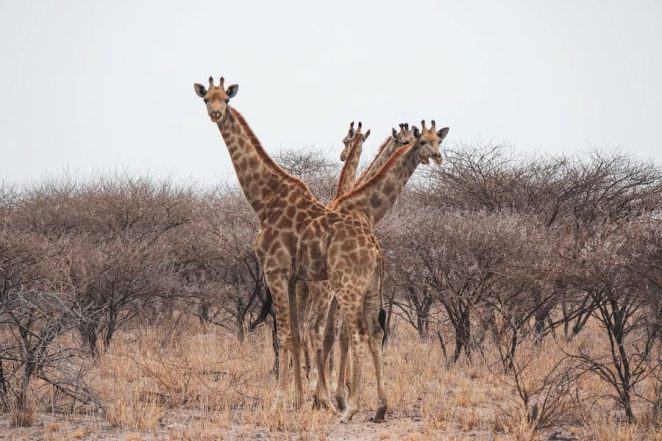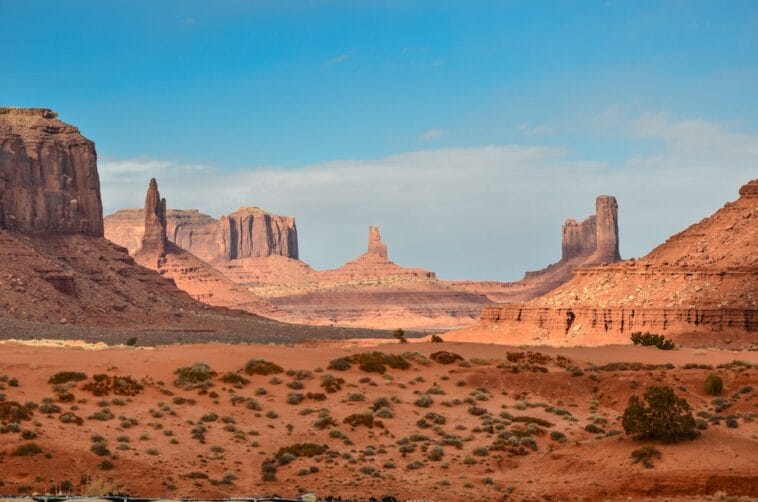The Kalahari Desert is a vast and enigmatic landscape that stretches across Botswana, Namibia, and South Africa. It is a place of extreme conditions, with scorching temperatures, sparse vegetation, and shifting sand dunes. Despite its harsh environment, the Kalahari is home to a diverse array of wildlife and has a rich cultural heritage. In this blog post, we will delve into the mysteries of the Kalahari Desert, exploring its unique climate, wildlife, people, geology, and more. Join us on this journey as we uncover the secrets of this captivating desert.
Key Takeaways
- The Kalahari Desert is a land of extreme conditions, with scorching temperatures and little rainfall.
- The wildlife of the Kalahari is unique and diverse, with species such as meerkats, black-maned lions, and gemsbok.
- The people of the Kalahari have a rich cultural heritage, with traditional hunter-gatherer societies still living in the region.
- The geology of the Kalahari reveals a complex history of ancient rivers and shifting sand dunes.
- Exploring the Kalahari can be a thrilling adventure, but survival in the harsh environment requires careful preparation and knowledge.
The Kalahari Desert: A Land of Extreme Conditions
The Kalahari Desert is known for its extreme climate and weather patterns. It experiences hot summers with temperatures reaching up to 40 degrees Celsius (104 degrees Fahrenheit) and cold winters with temperatures dropping below freezing at night. Rainfall is scarce in the Kalahari, with an average annual precipitation of less than 250 millimeters (10 inches). This arid environment creates a unique ecosystem that is adapted to survive in these harsh conditions.
The geological features of the Kalahari Desert are also fascinating. The desert is characterized by vast expanses of red sand dunes, which are constantly shifting due to the wind. These dunes can reach heights of up to 30 meters (98 feet) and create a mesmerizing landscape. In addition to the sand dunes, the Kalahari is also home to salt pans, dry riverbeds, and rocky outcrops. These geological formations add to the allure and mystery of the desert.
Wildlife of the Kalahari: A Haven for Unique Species
Despite its harsh conditions, the Kalahari Desert is teeming with wildlife. It is home to a diverse range of animal and plant species that have adapted to survive in this arid environment. Some of the most iconic animals found in the Kalahari include the meerkat, the black-maned Kalahari lion, the gemsbok (oryx), and the springbok. These animals have developed unique strategies to cope with the lack of water and food, such as being able to go for long periods without drinking and feeding on plants with high water content.
The Kalahari is also a haven for birdwatchers, with over 200 species of birds recorded in the region. Some of the most notable bird species found in the desert include the sociable weaver, the kori bustard, and the secretary bird. In addition to its diverse animal life, the Kalahari is also home to a variety of plant species, including camel thorn trees, shepherd’s trees, and various types of grasses. These plants provide food and shelter for the animals that inhabit the desert.
The People of the Kalahari: A Rich Cultural Heritage
| Aspect | Metric |
|---|---|
| Population | Approximately 100,000 people |
| Location | Kalahari Desert, Botswana, Namibia, and South Africa |
| Language | Various languages including !Kung, Naro, and G/wi |
| Religion | Traditional beliefs and practices, Christianity, and Islam |
| Food | Meat from hunting, gathering of wild fruits and vegetables, and domesticated animals |
| Art and Music | Rock art, beadwork, and traditional music with instruments such as the mouth bow and hunting bow |
| Gender Roles | Men hunt and provide for the family, while women gather and take care of the household |
| Education | Low literacy rates due to lack of access to education |
| Threats | Loss of land and resources due to mining and tourism, and cultural assimilation |
The Kalahari Desert is not only home to a diverse range of wildlife but also to indigenous people who have lived in harmony with this harsh environment for thousands of years. The San people, also known as Bushmen, are the oldest inhabitants of southern Africa and have a rich cultural heritage that is deeply connected to the land. They have traditionally lived as hunter-gatherers, relying on their intimate knowledge of the desert to find food and water.
The San people have a deep spiritual connection to the Kalahari and believe that all living things are interconnected. They have a rich oral tradition, passing down stories and knowledge from generation to generation through storytelling and rock art. The San people’s way of life is under threat due to modernization and encroachment on their traditional lands. However, efforts are being made to preserve their cultural heritage and promote sustainable tourism that benefits their communities.
The Geology of the Kalahari: Uncovering the Formation of the Desert
The Kalahari Desert was not always a desert. It was once a vast inland sea that covered much of southern Africa. Over millions of years, geological processes such as tectonic activity and climate change transformed the landscape into the arid desert we see today. The movement of tectonic plates caused the uplift of the land, creating a basin that trapped water and formed the ancient lake. As the climate became drier, the lake gradually dried up, leaving behind salt pans and sand dunes.
The sand dunes in the Kalahari are constantly shifting due to the wind. This process, known as aeolian activity, is responsible for the ever-changing landscape of the desert. The sand is blown by prevailing winds and accumulates in certain areas, forming dunes that can reach impressive heights. Over time, these dunes migrate and change shape, creating a dynamic and ever-evolving environment.
Exploring the Kalahari: Adventures in the Desert

There are many ways to explore the Kalahari Desert and experience its wonders firsthand. One popular option is hiking, which allows you to immerse yourself in the vastness and solitude of the desert. There are several hiking trails in the Kalahari that range from easy walks to more challenging multi-day treks. These trails take you through diverse landscapes, from sand dunes to salt pans to rocky outcrops.
Camping is another popular activity in the Kalahari, allowing you to spend a night under the stars and experience the tranquility of the desert at night. There are designated camping areas in national parks and private reserves where you can set up your tent and enjoy the beauty of the desert. Some campsites even offer basic facilities such as toilets and showers.
For those who prefer a more guided experience, there are several tour operators that offer guided tours of the Kalahari. These tours provide a deeper insight into the desert’s wildlife, culture, and geology. They are led by experienced guides who have extensive knowledge of the region and can take you to the most interesting and off-the-beaten-path destinations.
Survival in the Kalahari: Navigating the Harsh Environment
Surviving in the Kalahari Desert is no easy feat. The harsh environment presents many challenges, from finding water to seeking shelter from the scorching sun. However, with the right knowledge and preparation, it is possible to navigate this unforgiving landscape.
One of the biggest challenges in the Kalahari is finding water. The desert is known for its scarcity of water, and dehydration can be a real threat. It is important to carry enough water with you at all times and to ration it carefully. It is also advisable to have a backup plan in case you run out of water, such as knowing where the nearest water source is or carrying a water purification system.
Finding shelter in the Kalahari can also be challenging, as there are few natural shelters available. It is important to come prepared with a tent or other form of shelter that can protect you from the elements. It is also advisable to avoid camping near dry riverbeds or salt pans, as these areas can flood during heavy rains.
Conservation Efforts in the Kalahari: Protecting a Fragile Ecosystem
The Kalahari Desert is a fragile ecosystem that is under threat from human activities such as mining, agriculture, and tourism. Conservation efforts are being made to protect this unique environment and ensure its long-term survival.
One of the main challenges facing conservationists in the Kalahari is balancing conservation with sustainable development. Many local communities rely on natural resources for their livelihoods, and it is important to find ways to support their economic development while also protecting the environment. This can be achieved through initiatives such as community-based natural resource management, which involves local communities in the management and conservation of natural resources.
Another challenge is the illegal wildlife trade, which threatens the survival of many species in the Kalahari. Poaching for bushmeat, ivory, and exotic pets is a major problem in the region. Efforts are being made to combat this illegal trade through increased law enforcement, public awareness campaigns, and community engagement.
The Beauty of the Kalahari: Capturing the Desert’s Stunning Landscapes
The Kalahari Desert is a place of breathtaking beauty, with its vast sand dunes, golden grasslands, and dramatic sunsets. It is a photographer’s paradise, offering endless opportunities to capture stunning landscapes and unique wildlife.
One of the most iconic features of the Kalahari is its red sand dunes. These dunes create a striking contrast against the blue sky and are particularly beautiful at sunrise and sunset when they are bathed in warm hues of orange and gold. The shifting patterns of the dunes create a sense of movement and add to the dynamic nature of the desert.
The Kalahari is also home to several salt pans, which are vast expanses of white salt that stretch as far as the eye can see. These salt pans create a surreal and otherworldly landscape that is unlike anything else on Earth. They are particularly beautiful after rainfall when they reflect the sky and create a mirror-like effect.
Reflections on the Kalahari Desert’s Enduring Allure
The Kalahari Desert is a place of mystery and wonder, with its extreme conditions, diverse wildlife, rich cultural heritage, and stunning landscapes. It is a place that captivates the imagination and draws people from all over the world to experience its unique beauty.
Despite its challenges, the Kalahari has an enduring allure that continues to attract adventurers, nature lovers, and cultural enthusiasts. It is a place where you can disconnect from the modern world and reconnect with nature, where you can witness the resilience of life in the face of adversity, and where you can learn from the wisdom of indigenous cultures.
We encourage you to visit the Kalahari Desert and experience its wonders for yourself. Whether you choose to hike through its vast sand dunes, camp under its starry skies, or learn from its indigenous people, the Kalahari will leave an indelible mark on your soul. It is a place that will challenge you, inspire you, and remind you of the beauty and fragility of our planet.
If you’re interested in learning more about the unique ecosystem and wildlife of the Kalahari Desert, you might enjoy reading the article “Deserts: Ecology and How Mammals Survive.” This informative piece explores how animals have adapted to survive in harsh desert environments, including the Kalahari. From camels to meerkats, discover the fascinating strategies these creatures employ to thrive in extreme conditions. Check out the article here.


